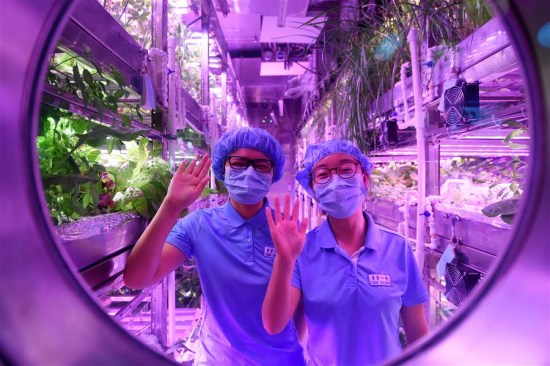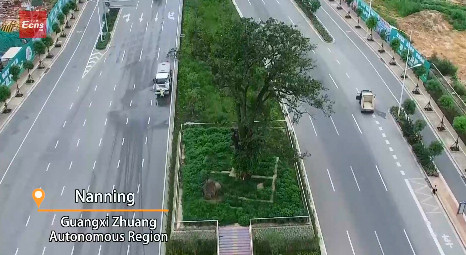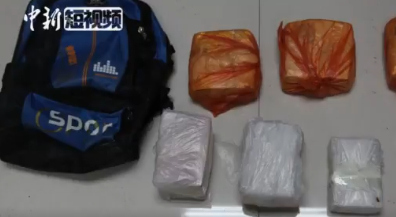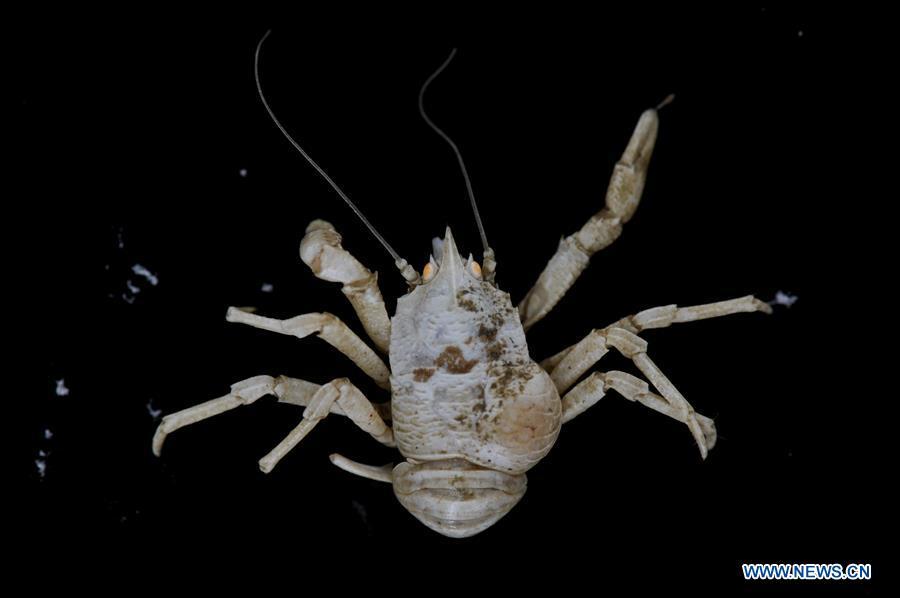
Photo taken on May 19, 2018 shows a sample collected by the submersible Shenhai Yongshi (Deep Sea Warrior) in the South China Sea. China has carried out deep-sea research to explore a cold seep in the South China Sea. It is the first time two domestically-made deep-sea submersibles, the unmanned submersible Haima (Seahorse) and manned submersible Shenhai Yongshi, have been used in a single scientific expedition. A cold seep is an area of the ocean floor where hydrogen sulfide, methane and other hydrocarbon-rich fluid seepage occurs. Research at the Haima cold seep will provide information on the formation of natural gas hydrate reservoirs, the ecosystems of cold seeps and the origins of life on earth. (Xinhua/Zhang Jiansong)
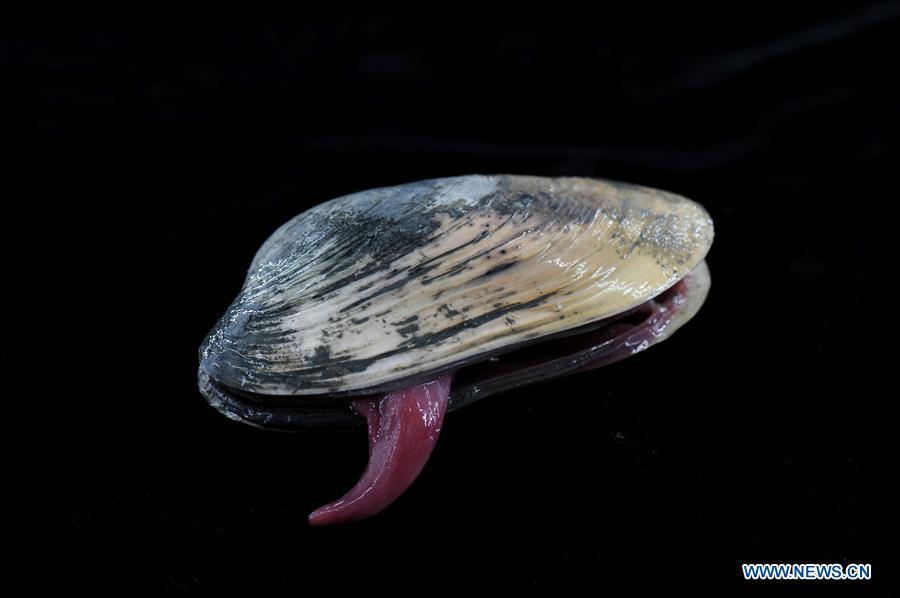
Photo taken on May 19, 2018 shows a sample collected by the submersible Shenhai Yongshi (Deep Sea Warrior) in the South China Sea. China has carried out deep-sea research to explore a cold seep in the South China Sea. It is the first time two domestically-made deep-sea submersibles, the unmanned submersible Haima (Seahorse) and manned submersible Shenhai Yongshi, have been used in a single scientific expedition. A cold seep is an area of the ocean floor where hydrogen sulfide, methane and other hydrocarbon-rich fluid seepage occurs. Research at the Haima cold seep will provide information on the formation of natural gas hydrate reservoirs, the ecosystems of cold seeps and the origins of life on earth. (Xinhua/Zhang Jiansong)
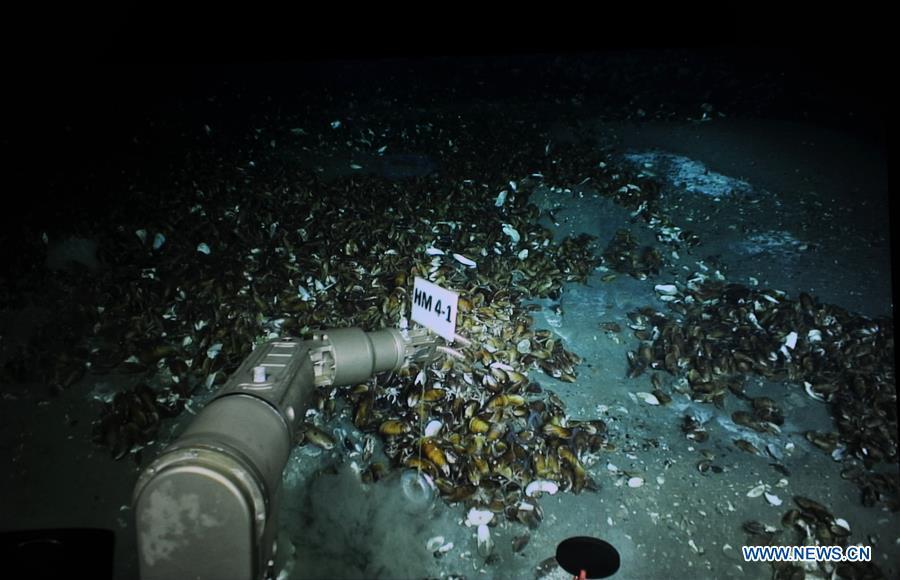
Photo taken on May 20, 2018 shows the submersible Shenhai Yongshi (Deep Sea Warrior) collecting samples in the South China Sea. China has carried out deep-sea research to explore a cold seep in the South China Sea. It is the first time two domestically-made deep-sea submersibles, the unmanned submersible Haima (Seahorse) and manned submersible Shenhai Yongshi, have been used in a single scientific expedition. A cold seep is an area of the ocean floor where hydrogen sulfide, methane and other hydrocarbon-rich fluid seepage occurs. Research at the Haima cold seep will provide information on the formation of natural gas hydrate reservoirs, the ecosystems of cold seeps and the origins of life on earth. (Xinhua/Zhang Jiansong)
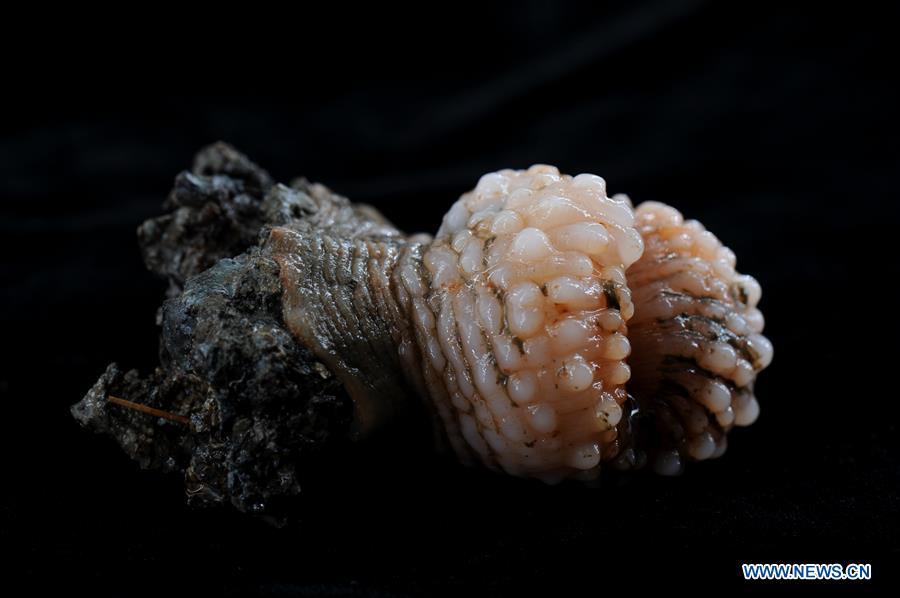
Photo taken on May 18, 2018 shows a sample collected by the submersible Shenhai Yongshi (Deep Sea Warrior) in the South China Sea. China has carried out deep-sea research to explore a cold seep in the South China Sea. It is the first time two domestically-made deep-sea submersibles, the unmanned submersible Haima (Seahorse) and manned submersible Shenhai Yongshi, have been used in a single scientific expedition. A cold seep is an area of the ocean floor where hydrogen sulfide, methane and other hydrocarbon-rich fluid seepage occurs. Research at the Haima cold seep will provide information on the formation of natural gas hydrate reservoirs, the ecosystems of cold seeps and the origins of life on earth. (Xinhua/Zhang Jiansong)
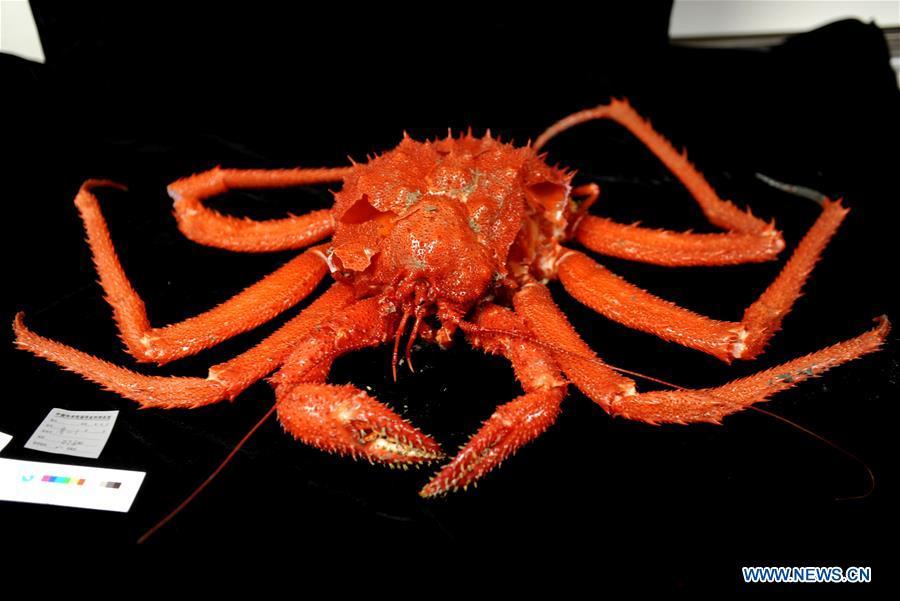
Photo taken on May 19, 2018 shows a sample collected by the submersible Shenhai Yongshi (Deep Sea Warrior) in the South China Sea. China has carried out deep-sea research to explore a cold seep in the South China Sea. It is the first time two domestically-made deep-sea submersibles, the unmanned submersible Haima (Seahorse) and manned submersible Shenhai Yongshi, have been used in a single scientific expedition. A cold seep is an area of the ocean floor where hydrogen sulfide, methane and other hydrocarbon-rich fluid seepage occurs. Research at the Haima cold seep will provide information on the formation of natural gas hydrate reservoirs, the ecosystems of cold seeps and the origins of life on earth. (Xinhua/Zhang Jiansong)
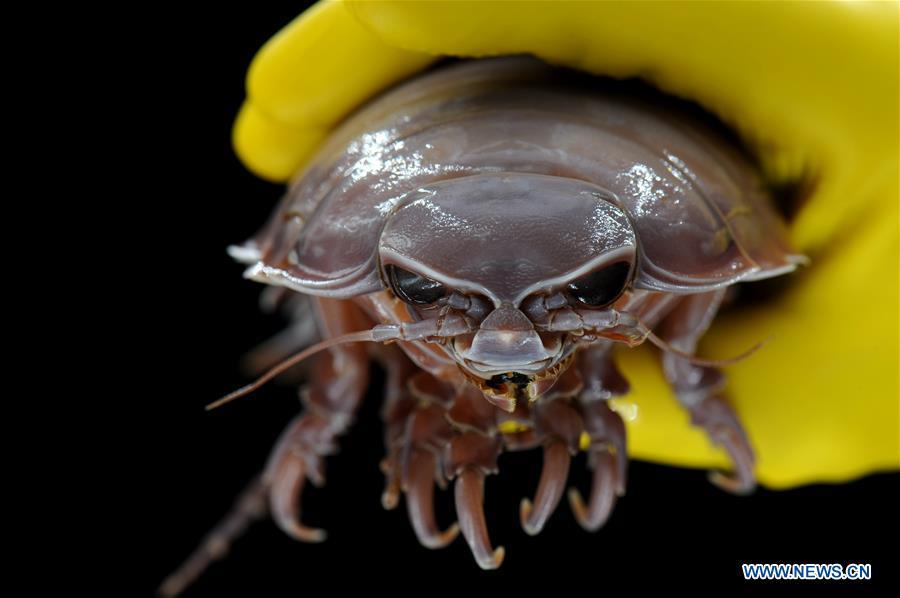
Photo taken on May 18, 2018 shows a sample collected by the submersible Shenhai Yongshi (Deep Sea Warrior) in the South China Sea. China has carried out deep-sea research to explore a cold seep in the South China Sea. It is the first time two domestically-made deep-sea submersibles, the unmanned submersible Haima (Seahorse) and manned submersible Shenhai Yongshi, have been used in a single scientific expedition. A cold seep is an area of the ocean floor where hydrogen sulfide, methane and other hydrocarbon-rich fluid seepage occurs. Research at the Haima cold seep will provide information on the formation of natural gas hydrate reservoirs, the ecosystems of cold seeps and the origins of life on earth. (Xinhua/Zhang Jiansong)
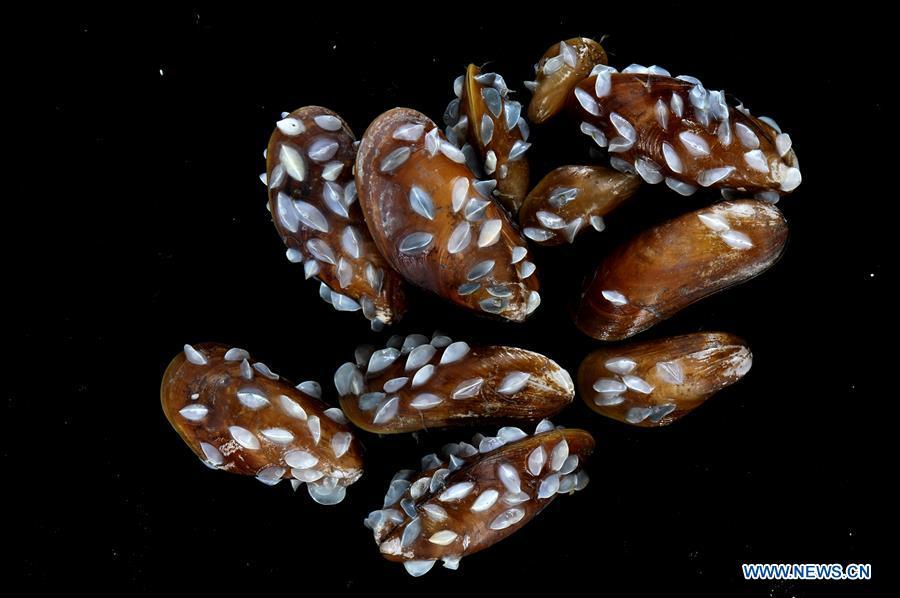
Photo taken on May 19, 2018 shows samples collected by the submersible Shenhai Yongshi (Deep Sea Warrior) in the South China Sea. China has carried out deep-sea research to explore a cold seep in the South China Sea. It is the first time two domestically-made deep-sea submersibles, the unmanned submersible Haima (Seahorse) and manned submersible Shenhai Yongshi, have been used in a single scientific expedition. A cold seep is an area of the ocean floor where hydrogen sulfide, methane and other hydrocarbon-rich fluid seepage occurs. Research at the Haima cold seep will provide information on the formation of natural gas hydrate reservoirs, the ecosystems of cold seeps and the origins of life on earth. (Xinhua/Zhang Jiansong)
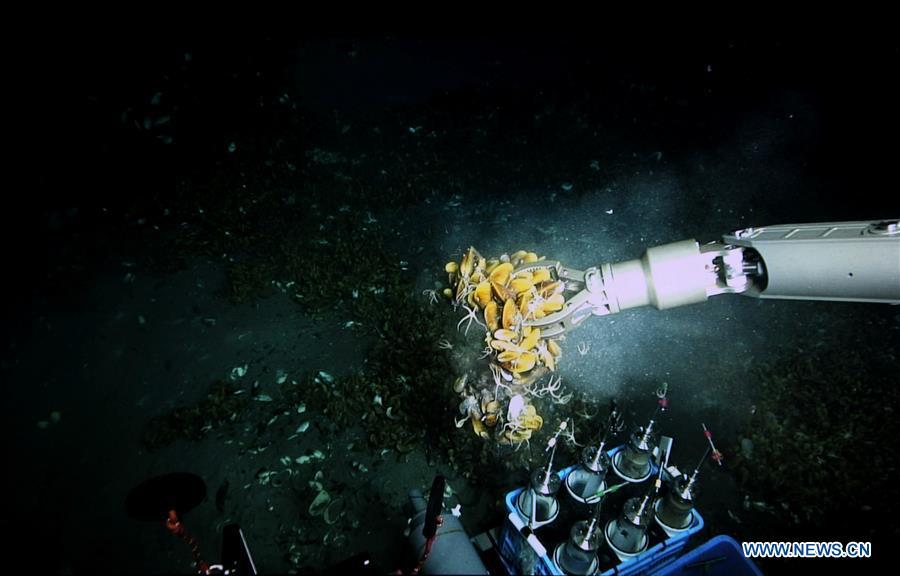
Photo taken on May 20, 2018 shows the submersible Shenhai Yongshi (Deep Sea Warrior) collecting samples in the South China Sea. China has carried out deep-sea research to explore a cold seep in the South China Sea. It is the first time two domestically-made deep-sea submersibles, the unmanned submersible Haima (Seahorse) and manned submersible Shenhai Yongshi, have been used in a single scientific expedition. A cold seep is an area of the ocean floor where hydrogen sulfide, methane and other hydrocarbon-rich fluid seepage occurs. Research at the Haima cold seep will provide information on the formation of natural gas hydrate reservoirs, the ecosystems of cold seeps and the origins of life on earth. (Xinhua/Zhang Jiansong)
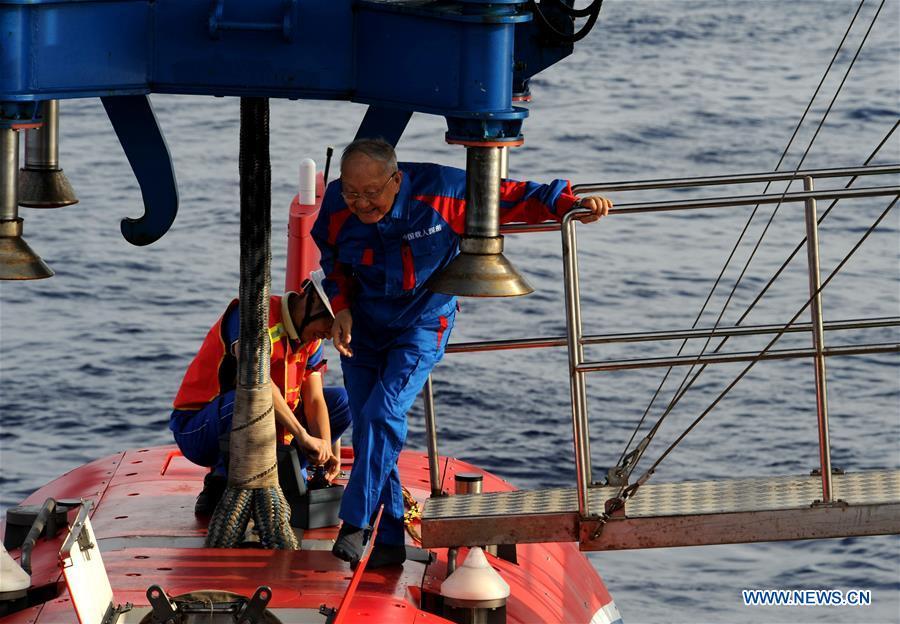
Geologist Wang Pinxian, 82, boards the submersible Shenhai Yongshi (Deep Sea Warrior) in the South China Sea, May 19, 2018. China has carried out deep-sea research to explore a cold seep in the South China Sea. It is the first time two domestically-made deep-sea submersibles, the unmanned submersible Haima (Seahorse) and manned submersible Shenhai Yongshi, have been used in a single scientific expedition. A cold seep is an area of the ocean floor where hydrogen sulfide, methane and other hydrocarbon-rich fluid seepage occurs. Research at the Haima cold seep will provide information on the formation of natural gas hydrate reservoirs, the ecosystems of cold seeps and the origins of life on earth. (Xinhua/Zhang Jiansong)

















